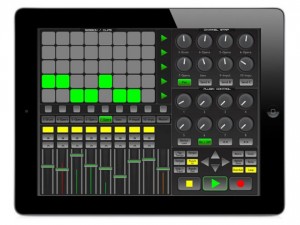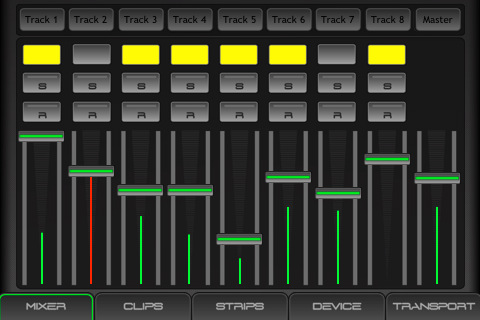 The awkwardly named iXiMix is a UK based development team specializing in iOS control interfaces for your favorite music software. At the time of writing, they’ve released touch controllers for Traktor, Access Virus and, of course, Ableton. This last one pits them against some increasingly stiff competition, but if there’s one theme I’ve come to appreciate from the happy marriage of Ableton and iOS, it’s the ability of developers to surprise with their artistry and insight.
The awkwardly named iXiMix is a UK based development team specializing in iOS control interfaces for your favorite music software. At the time of writing, they’ve released touch controllers for Traktor, Access Virus and, of course, Ableton. This last one pits them against some increasingly stiff competition, but if there’s one theme I’ve come to appreciate from the happy marriage of Ableton and iOS, it’s the ability of developers to surprise with their artistry and insight.
Eschewing the standard client/server format, LiveRemote is installed as a series of Python control surface scripts, so you get that nice colored box outlining what’s currently mapped to the controls. It boasts latency as low as 1-3ms, and it certainly feels fast. Even if you normally have the global quantize on, you’ll be comforted to know that any final-moment, lunging changes of mind will be accommodated as effortlessly as if you had used a mouse or keys.
It has a single screen, divided into five sections. An 8 x 5 green and gray clip matrix at top left has the usual play, stop and scene triggers, albeit without any color or naming feedback from Ableton. Below it, the mixer, with live and accurate VU, can be stepped through one channel at a time, which is a sensible, if overdue, design. Unfortunately, I got a lot of garbled text on my strip names and this, along with a couple of other quirky behaviors, means it’s pretty easy to get lost in the mixer, and spend valuable seconds fiddling with the view to set things right again.
As well as level faders, arm, solo and mute buttons are included in the mixer section, but pans and sends are cordoned off in a separate panel at the top right of the screen. Four buttons set the global mode – pan, send A, send B and send C – for the eight knobs above. If you use multiple sends a lot at the same time, the lack of dedicated knobs will give you some grief, but for most users I wouldn’t expect this section to see much use in a live setting.
Below this are the macros, two rows of four knobs and some controls to help navigate devices. This navigation is a great touch and makes it simple to jump through devices, or lock one to the control surface while moving around elsewhere. Best of all, they’ll map to third party VSTs, something the client/server apps have yet to achieve.

Unfortunately, the implementation is choppy and inconsistent. There’s no way to know which parameters are mapped to the knobs, and no way to bank up through a second and third set of parameters. Sometimes a knob won’t seem to map to any control, while the knobs on either side of it affect adjacent parameters in the device. Presumably this is thanks to the device definition, but with no visual feedback of any kind, it’s difficult to trust in any spontaneous setting.
That said, this section really is perfect for playing macros, which map perfectly every time. If you’re going to be tweaking on the fly, and you spend the time preparing your controls, you’ll get better results with LiveRemote than anywhere this side of dedicated hardware.
The final section is for navigation, and is another strong, if simple, point. It’s dominated by the play, stop and record buttons, and by a four-button directional pad that works well. Smaller buttons for tempo and loop control, undo/redo, and clip/track/Detail View toggles finish it off. This small section is one of the better parts of the app. It’s clean, and it works just the way you expect it to.
And that’s it, and it’s about as much as you could comfortably fit onto the screen. LiveRemote’s point of difference is in its back-end design: because iXiMix have chosen to go with Python scripting instead of funnelling data through a server app, it has access to parts of Live’s API that other apps cannot match: that’s why it can identify mapped controls directly in Live, and why it can access VSTs. Some regrettable shortcomings aside, LiveRemote is a promising early version that has yet to realize where its unique potential lies: in marrying the obvious craftsmanship of the code with a more smarter, more refined front-end.




